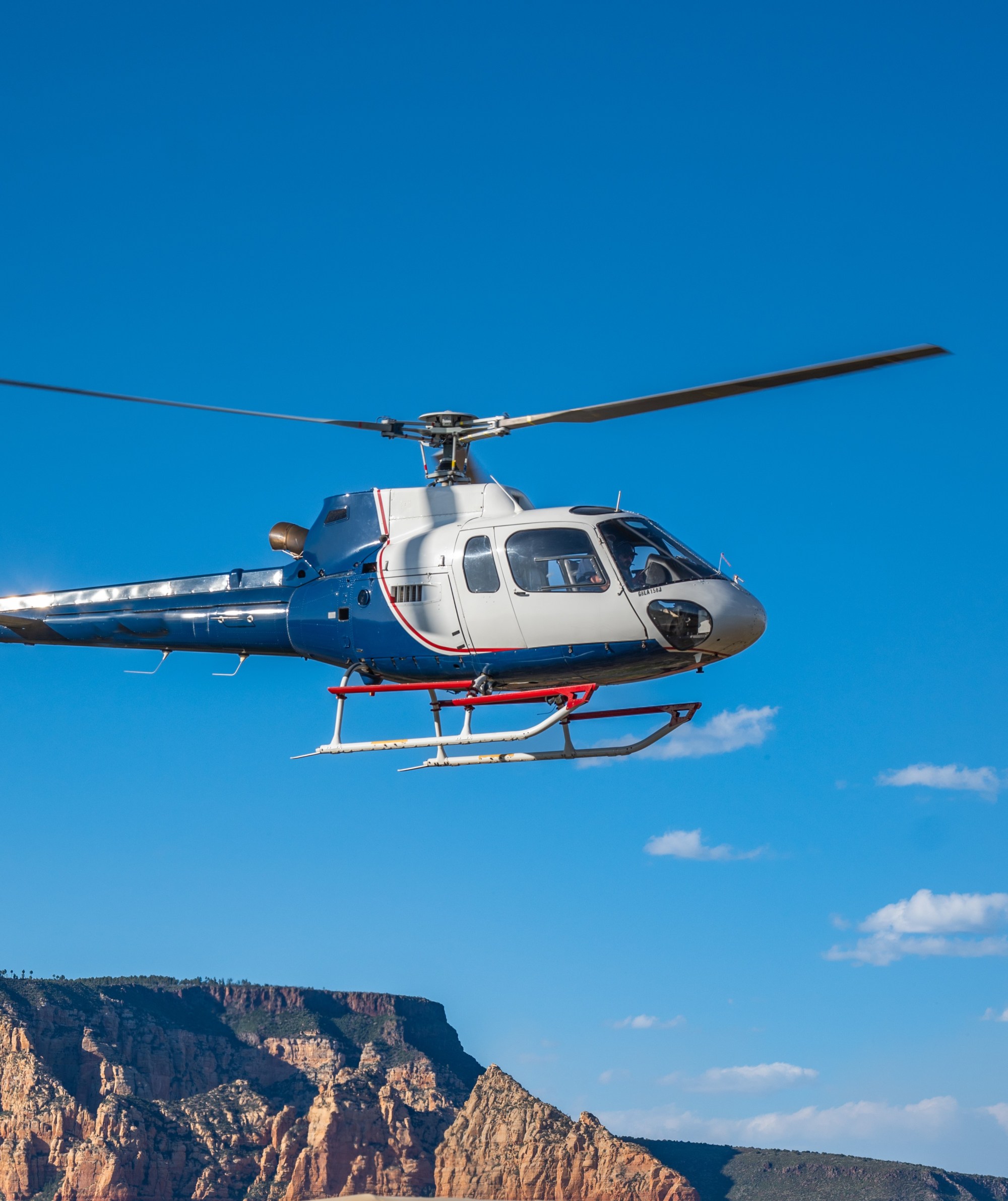Sedona from Above: Why Aerial Views Tell a Different Story

Sedona is a place that has been photographed, painted, and written about countless times. Its red rock formations rise like cathedrals out of the desert floor, and every curve of its canyons has inspired travelers to stop and stare. Hikers climb the trails, cars pull off at scenic overlooks, and artists spend hours trying to capture the way the light shifts across sandstone walls. Yet even after all of that, there is still another perspective that transforms the familiar into something entirely new. Seeing Sedona from above is not just a change of angle. It is an entirely different story.
A View That Expands the Horizon
On the ground, Sedona feels intimate. Trails wind between junipers and lead you into the shadows of buttes and spires. The red rock walls rise around you, and while the scale is impressive, your perspective is limited. From a helicopter, the scale changes. What once felt immense becomes part of a broader canvas. Cathedral Rock is still magnificent, but from above you see how it lines up with Courthouse Butte and Bell Rock. The Verde Valley stretches toward the horizon, and the red rocks become part of a larger pattern. The landscape no longer feels like isolated monuments but like pieces of a grand design.
Flying above Sedona offers the chance to see both detail and panorama at once. You can appreciate the way Oak Creek Canyon cuts a green ribbon through the desert, then follow its path as it narrows and deepens into hidden curves. The air removes the barriers that the land sets in place. Suddenly, you are not confined to a single trail or overlook. The entire region unfolds beneath you.
Colors That Shift with the Light
Anyone who has visited Sedona knows that light is part of the show. Sunrise paints the rocks in soft pinks, midday turns them blazing orange, and sunset deepens them to crimson and purple. On the ground, these changes are dramatic but they happen in fragments. From a helicopter, the play of color is amplified.
At higher elevations, the rocks seem to glow against the desert floor. Shadows stretch across valleys and reveal textures hidden at noon. You can watch the color shift across entire ranges in real time. A single flight becomes a moving gallery of changing hues, each second revealing a new combination of light and shadow. For photographers, this perspective is priceless. For travelers, it is simply unforgettable.
Landmarks That Tell Their Own Stories
Sedona is filled with landmarks that carry both geological wonder and cultural meaning. From above, these icons reveal dimensions that cannot be understood from below.
- Cathedral Rock: From the trail, it rises like a wall of stone. From the sky, you see its spires and gaps form natural windows to the valley below.
- Bell Rock: Named for its bell shape, this formation looks different from every direction. Flying overhead reveals its layered symmetry and how it anchors the landscape around it.
- Courthouse Butte: Vast and imposing from the road, but from the air you see how its flat top mirrors mesas in the distance, connecting it to a broader desert story.
- Oak Creek Canyon: Driving through the canyon offers glimpses of cliffs and switchbacks. From the air, its sinuous path becomes a work of art, a natural brushstroke carving through stone.
Each landmark holds a story, and from above those stories are told with clarity.
Hidden Places Revealed
Sedona is loved for its trails and accessible viewpoints, but not everything is reachable by foot. Some canyons are too remote, some spires too distant, and some valleys too rugged. From a helicopter, the inaccessible becomes visible. You can hover above slot canyons, circle unnamed rock towers, and trace the outlines of ridges that few visitors will ever see.
This perspective does not replace hiking or exploring on the ground. Instead, it enriches it. Seeing the full layout from the sky can make your time on the trails even more meaningful. You return to the ground with a better sense of direction, scale, and connection. You know not just where you are, but how that place fits into the larger whole.
The Emotional Side of Flight
There is also something deeply emotional about flying above Sedona. It is not just sightseeing, it is experiencing wonder in a new way. For some, it is a chance to celebrate a milestone with a perspective as grand as the occasion. For others, it is a quiet moment of reflection, watching the landscape roll out like a storybook.
The feeling of lift, the hum of the rotor, and the sudden freedom of flight combine with Sedona’s natural beauty to create memories that last long after you land. You are not just looking at scenery. You are participating in it, moving with it, and seeing it in a way that few ever will.
Why Aerial Views Matter
Sedona is beautiful from every angle. Trails bring you close to the earth, car overlooks give you sweeping vistas, and artists capture fragments of light and form. But aerial views add a layer that is hard to describe until you see it yourself. They unite the intimate details with the vast horizon, showing both the micro and the macro in one glance.
For visitors, this means leaving with a deeper understanding of what makes Sedona unique. For locals, it can mean rediscovering the beauty they thought they already knew. For everyone, it is a reminder that the world looks different when you change your perspective.
Planning Your Experience
If you are planning a trip to Sedona, consider pairing your favorite ground activities with a helicopter tour. Hike Cathedral Rock, then see it from above. Drive Oak Creek Canyon, then fly its entire length. Watch sunset from Airport Mesa, then watch the same sunset paint the rocks from the air. Each experience complements the other, and together they tell the full story of Sedona.
When you look at Sedona from above, you are not just changing where you stand. You are changing the way you see. And sometimes, that is exactly what travel is meant to do.
